Name Ruud Kuijer | ||
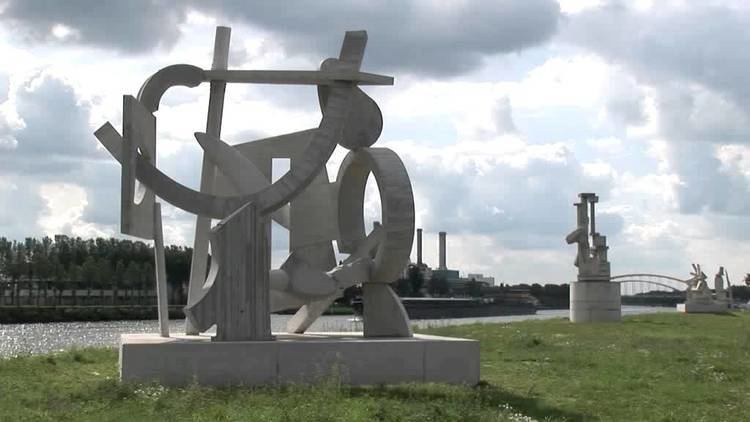 | ||
Ruud kuijer waterwerken waterworks
Ruud Kuijer (Schalkwijk, 8 June 1959) is a Dutch sculptor, particularly known for his Water works, a group of seven large-scale sculptures on the strip between Isotopenweg and the Amsterdam-Rhine Canal.
Contents
- Ruud kuijer waterwerken waterworks
- Ruud Kuijer Waterwerken
- Life and work
- Sculptures 1985 2003
- Water works
- Exhibitions selection
- Collections
- Literature
- References
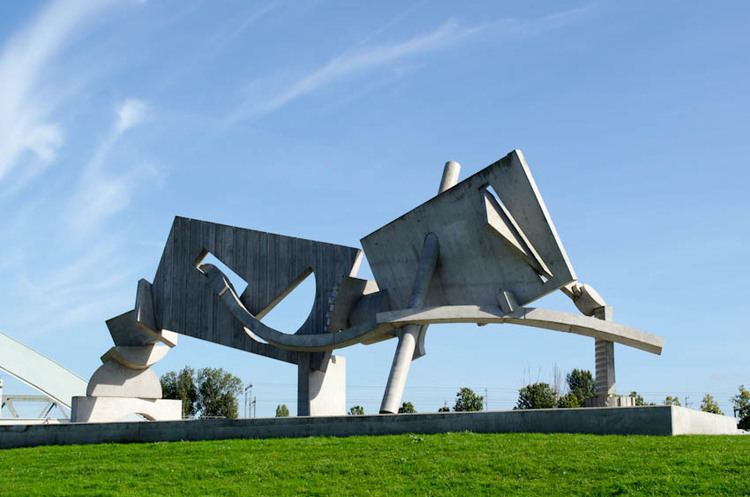
Ruud Kuijer Waterwerken
Life and work
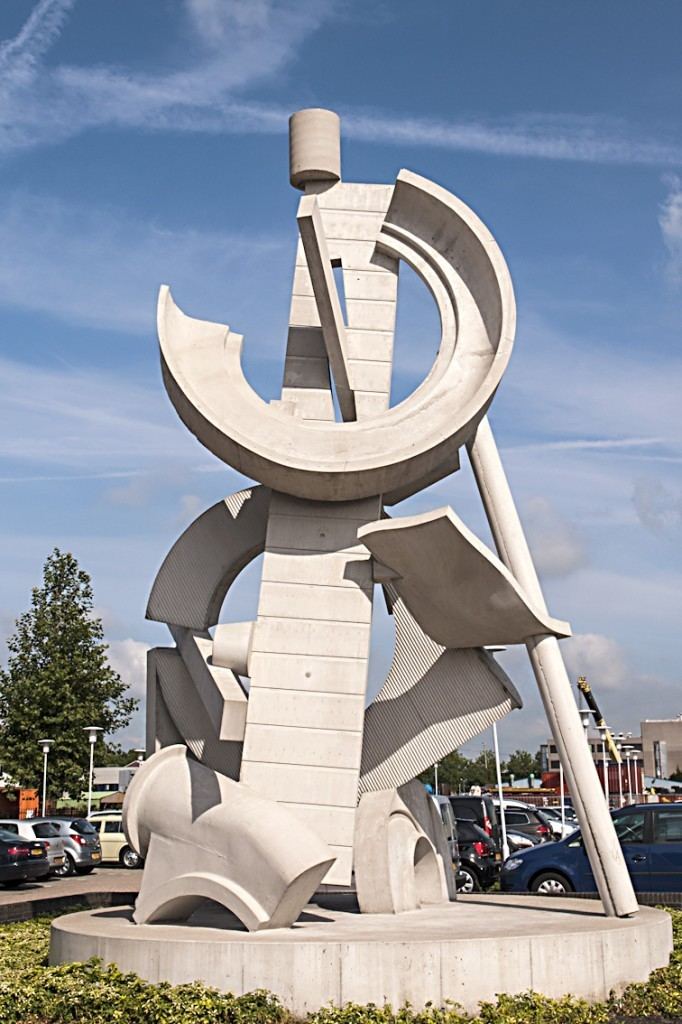
After studying at St. Joost Academy of Art and Design in 's-Hertogenbosch from 1981 to 1984 and after having completed a postgraduate course at Jan van Eyck Academy in Maastricht from 1984 tot 1986, Ruud Kuijer went to live and work in Utrecht. As a sculptor, Ruud Kuijer became famous for his abstract sculptures in which he often incorporated recognisable shapes. The main focus of his work is the purely sculptural articulation of space which may or may not include references to content outside the sculpture.

Tradition and recent sculpture tradition play a significant role in his work, as does the continual desire to transcend these. Originally the focus was on finding and using the plastic qualities and expressive possibilities offered by the properties of ordinary materials such as iron, screw thread, carpet, rope, wood and concrete. These materials have little or no history when it comes to art. In recent years concrete has been the dominant material. Ruud Kuijer also works as a teacher. From 1992 to 1997 he taught at the Academy in Den Bosch and from 2007 to 2008 at the Academy of Arts in Berlin.
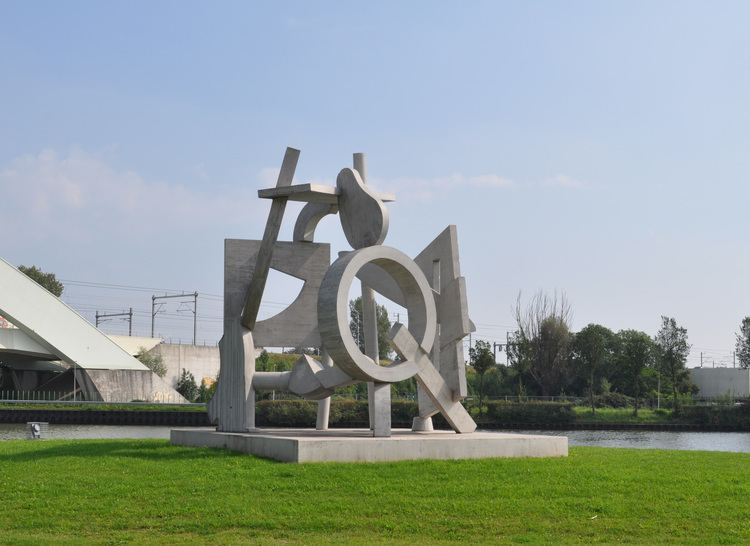
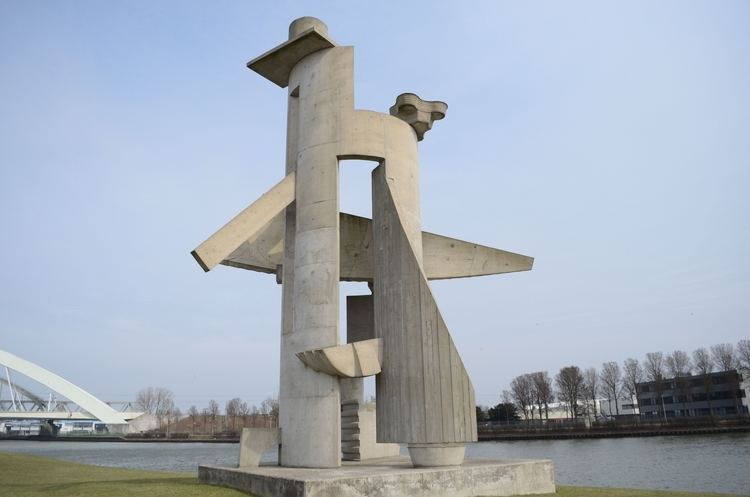


Sculptures 1985-2003

Between 1985 and 2003 he produced various series of sculptures whereby his point of departure was the specific possibilities offered by the materials used. In the sculptures belonging to the group entitled 'Staan/Liggen/Hangen/Leunen' (Standing/Lying Down/Hanging/Leaning) (1985-1992), the primary (structural) and secondary qualities (skin and colour) of various materials are coordinated and contrasted. These sculptures focus primarily on the concept of gravity: the individual weight of each separate part is rendered visible in the whole. The group entitled 'Gegalvaniseerd IJzer/Beton' (Galvanised Iron/Concrete) (1992-2001) is limited to the two materials stated. The galvanised iron comes from street furniture and other forms which, of course, have to be protected against rust. In this group, concrete is expressed simultaneously as a form and a link. The 'Draadeindsculpturen' (Threaded End Sculptures) (1996-2003) are an attempt to neutralise the rigid mechanics of nuts and bolts. The focus is on the inherent qualities of screw thread: it can act as both a line and a link. Physical concepts such as compressive and tensile force also become visible, particularly in combination with other forms or materials.
Water works
Since 2001 Kuijer has been working on a group of seven large-scale sculptures on the strip between Isotopenweg and the Amsterdam-Rhine Canal, at Lage Weide industrial estate in Utrecht. These monumental, concrete sculptures are 12 metres high and up to 14 metres long. They are made from a single piece and a single material. In other words, they are monolithic sculptures. They basically consist of two materials: concrete and reinforcing rods.
The sculptures project has been specially made for the location. The group establishes relationships at a number of different levels with water and transport, and with the industrial surroundings of Lage Weide industrial estate. The sculptures contrast with the purely functional surroundings and add a human dimension to the immense and expansive area. Kuijer used forms based on our own body as a mould. The sculptures contain references to water, for example, a moulded rowing boat, surfboard and a garden pond.
One specific possibility offered by concrete is making imprints. Water Work IV Overstag (Go About) uses, more so than in the other sculptures, the richly contrasting and expressive possibilities of the sculptor's skin.
Between 2010 and 2013 a sloping embankment was created between the sculptures. This tailoring of the landscape links the sculptures together to form a tight-knit unit. From the point of view of urban planning this anchors the project firmly in the surroundings. Nowadays the sculptures are also illuminated at night. Water Work VII Cohesie (Cohesion) is the final element in the series and is also the tallest, at 12.70 metres high. This sculpture is located next to the Werkspoorbrug along the banks of the Amsterdam-Rhine Canal, at the crossing of the international rail and water links between our country and the rest of Europe. Two shapes in the sculpture contain a repeating motif of the coats of arms of the cities of Amsterdam, Utrecht and Basel. One shape is visible for passing ships and the other stands at eye level for passing train passengers. The whole project was unveiled in March 2013 as part of the celebrations to mark the 300th anniversary of the Treaty of Utrecht (1713-2013).
Besides being an artist, Ruud Kuijer is also a cultural entrepreneur in heart and soul. There are very few independently initiated sculpture projects of this scale in public spaces. For the Water Works project, Kuijer himself arranged the funding and support from businesses, constructed a large workshop himself and even arranged all the permits for the locations. Water Works is unconventional from the point of view of vision, scale and location, and that makes it unique in the Netherlands. The Water Works sculpture project led him to being awarded the Fentener van Vlissingen culture prize in 2004 and the Dutch Concrete Award in 2005.
Exhibitions (selection)
Collections
Ruud Kuijer's works are included in collections of, among others:
